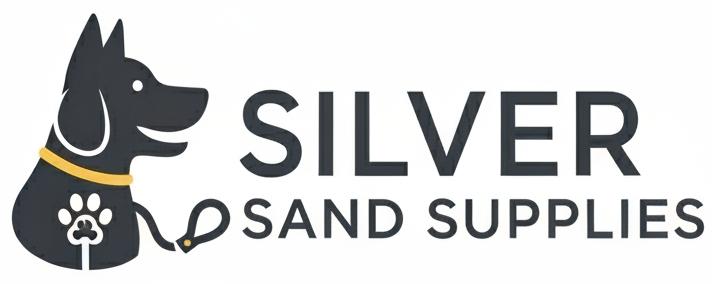The Ultimate Guide to Dog Nutrition
Your dog depends on you for everything, especially proper nutrition. Getting their diet right isn’t just about filling their bowl—it’s about giving them the foundation for a long, healthy, energetic life. Let’s cut through the marketing noise and focus on what actually matters for your furry friend.
The Building Blocks Your Dog Needs
Protein is king. Dogs are primarily carnivores, so high-quality protein should be the star of their diet. Look for whole meat sources like chicken, beef, fish, or lamb listed as the first ingredient. Your dog needs protein to build muscle, repair tissues, and maintain a strong immune system. Adult dogs need at least 18% protein in their diet, while puppies need 22% or more.
Fats fuel everything. Don’t fear fats—they’re essential for your dog’s coat, skin, brain function, and energy. Omega-3 and omega-6 fatty acids are particularly important. Fish oil, flaxseed, and chicken fat are excellent sources. Adult dogs need a minimum of 5.5% fat content.
Carbohydrates provide energy. While dogs don’t technically need carbs, they can digest and benefit from them. Sweet potatoes, brown rice, and oats offer sustained energy and fiber for digestive health. Avoid foods heavy in corn, wheat, or soy if your dog has sensitivities.
Decoding Dog Food Labels
The ingredient list tells the real story. Ingredients are listed by weight, so the first five ingredients make up most of the food. Red flags include vague terms like “meat meal” or “by-products.” Look for specific sources like “chicken meal” or “salmon meal.”
The guaranteed analysis shows minimum protein and fat percentages, plus maximum fiber and moisture. These numbers help you compare foods, but remember that dry food percentages look different from wet food due to moisture content.
Life Stage Matters
Puppies are growing machines that need more calories, protein, and fat than adults. Feed them puppy-specific food until they’re 12-18 months old (24 months for large breeds). They’ll need 2-4 meals daily depending on age.
Adult dogs do well with maintenance formulas fed twice daily. Most healthy adults can transition to once-daily feeding if preferred, but two smaller meals are gentler on digestion.
Senior dogs (7+ years) often benefit from easily digestible foods with joint-supporting ingredients like glucosamine. They may need fewer calories as their metabolism slows.
Feeding Guidelines That Actually Work
Forget the feeding chart on the bag—it’s just a starting point. Your dog’s ideal amount depends on age, activity level, metabolism, and body condition. Start with the recommended amount, then adjust based on your dog’s body condition.
You should be able to feel your dog’s ribs easily but not see them. There should be a visible waist when viewed from above. If you can’t feel the ribs, reduce food. If the ribs are prominent, increase portions.
Most dogs thrive on consistent meal times. Adult dogs typically do well with breakfast and dinner 8-12 hours apart.
Foods That Could Harm Your Dog
Keep these off-limits: chocolate, grapes, raisins, onions, garlic, avocado, macadamia nuts, and anything containing xylitol (artificial sweetener). Cooked bones can splinter and cause serious internal damage.
While not toxic, avoid feeding table scraps regularly. Human food is often too rich, salty, or fatty for dogs and can lead to pancreatitis or obesity.
Special Considerations
Food allergies usually show up as skin issues or digestive problems. True food allergies are less common than food sensitivities. If you suspect issues, work with your vet to identify triggers through an elimination diet.
Weight management is crucial—over 50% of dogs are overweight. Obesity shortens lifespan and worsens joint problems. If your dog needs to lose weight, reduce portions by 10-20% and increase exercise gradually.
Raw diets can work but require careful planning to ensure nutritional balance and food safety. If you’re interested, consult a veterinary nutritionist.
When to Switch Foods
Dogs don’t need variety like humans do. A high-quality food that keeps your dog healthy, energetic, and at proper weight can be fed long-term. Only switch if there are health issues, life stage changes, or if your current food is discontinued.
When switching, do it gradually over 7-10 days, mixing increasing amounts of new food with decreasing amounts of old food.
The Bottom Line
Good nutrition isn’t complicated, but it is important. Choose a food with quality ingredients appropriate for your dog’s life stage, feed the right amount for their body condition, maintain consistent meal times, and pay attention to how your dog looks and feels.
Your dog’s coat should be shiny, their energy consistent, their stools firm, and their weight stable. If something seems off, don’t guess—talk to your vet. They know your specific dog and can provide personalized advice.
Remember, the “best” dog food is the one that keeps YOUR dog thriving. That might be premium kibble, grain-free options, or even carefully planned homemade meals. Focus on results, not marketing claims, and you’ll give your dog the nutrition they deserve.



